The Lofoten Islands are a large archipelago of islands in northern Norway, inside the Artic Circle. Despite their northerly latitude of 68 degrees north, they are warmed by the Gulf Stream in the summer months and receive almost endless sunshine, blooming with wildflowers once the snows have receded.

Long known as a bucket list destination for sea kayakers, the Lofoten islands have always featured in the back of my mind as place that I was keen to paddle. I have always been impressed by a destination where the mountains and the sea meet - something that defines Lofoten.
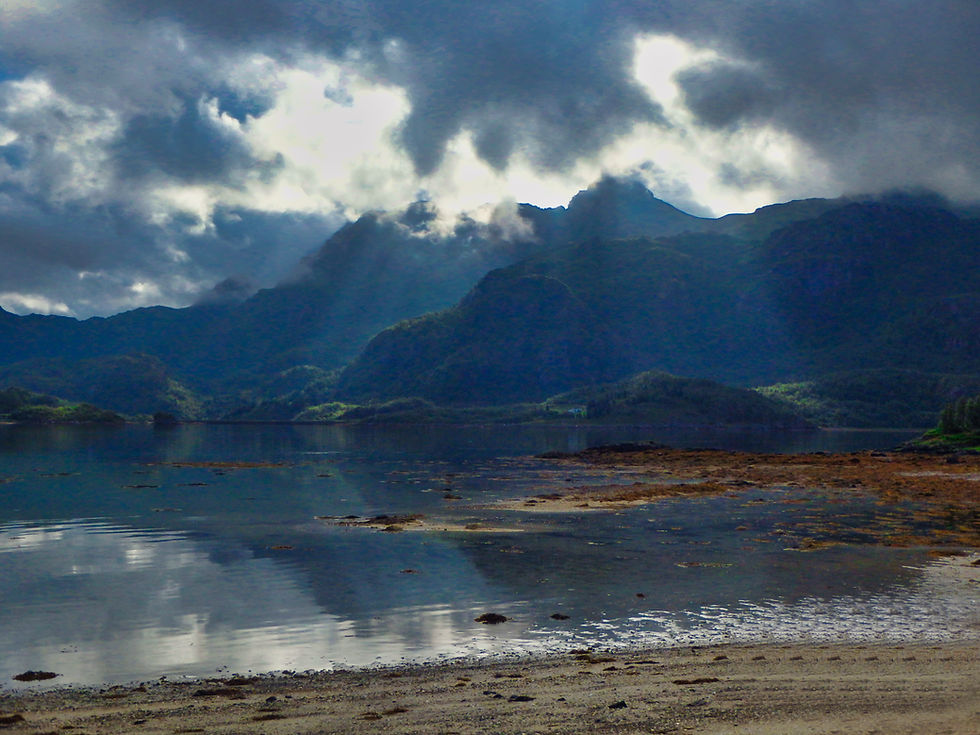
Getting out to Lofoten is surprisingly easy, flights from Manchester to Oslo, Oslo to Bodo - and then a wee turboprop plane up to Svolvar, the main settlement in Lofoten. The last flight is magical, flying low over the open sea and watching enormous vertiginous mountains rise from the sea to form a huge archipelago. One can see the entire chain and the imagination runs wild with possibilities.

We were met by Jann, our local expert and kayak provider. Jann can trace his family history back to the 17th Century on the islands, and he stands large, the very picture of a Viking seafarer. Also an expert sea kayaker and author of the local guidebook, he provided lots of useful local knowledge and weather-lore. Jann sorted out our boats and dropped us at the very comfortable commercial campsite, whilst we marvelled at the mountain views and gorgeous sunsets.
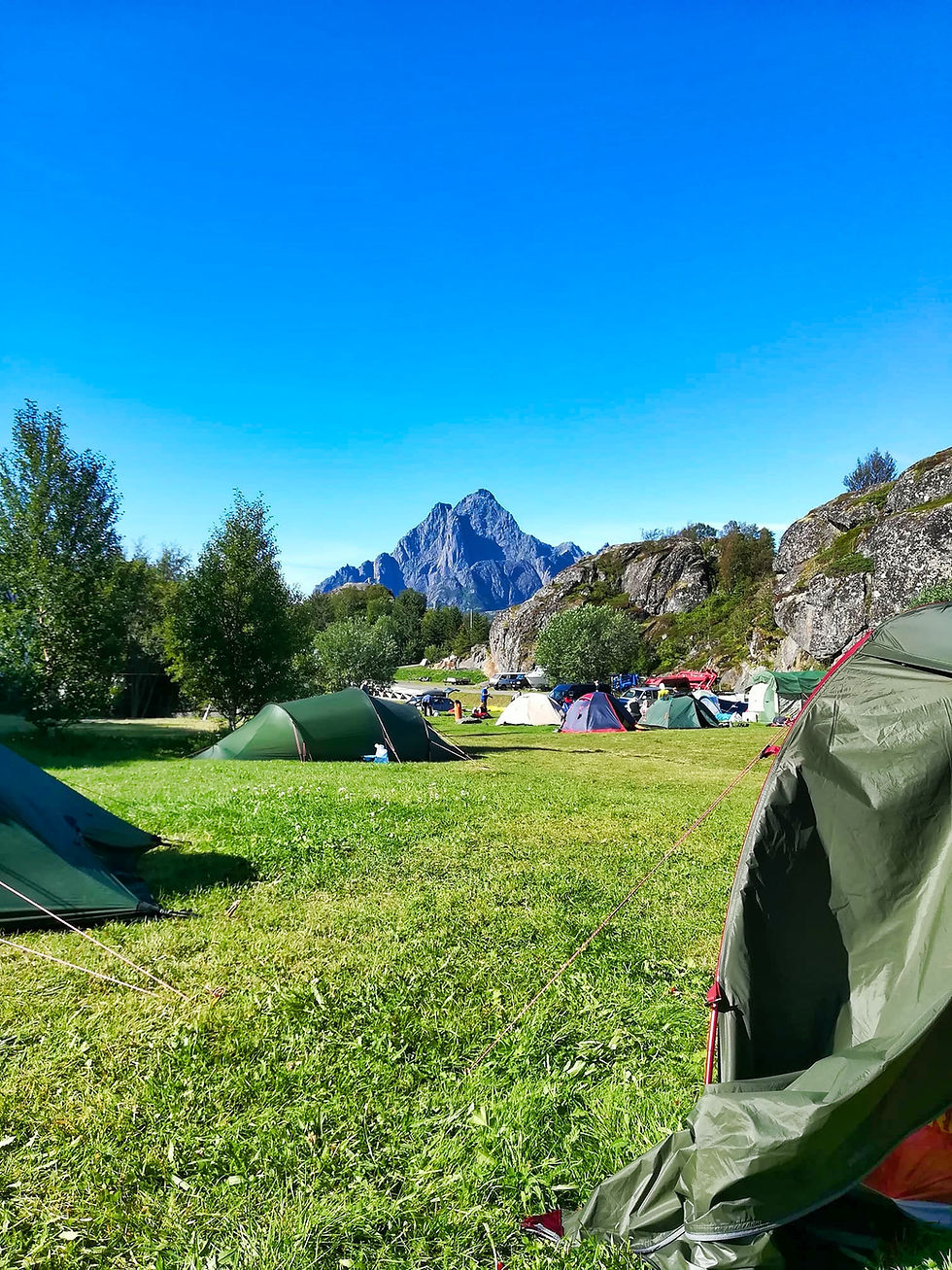
Our clients arrived the next day and after the food shopping and the usual boat fitting and packing faff, we launched in to a very heavy downpour! Unsurprisingly, the weather in the Artic Circle can change: rapidly! The forecast was for a Force 4, rising to 5 gusting 6 later, thus we set off for a small open crossing to get ourselves tucked up in to a fjord to get some shelter before the winds arrived. It actually picked up slightly early and we had a rather thrilling downwind surf to our campsite in a Force 6 gusting 7! Lofoten is full of wildlife, and our first day on the water did not disappoint, with one otter and four sea eagle spotted.
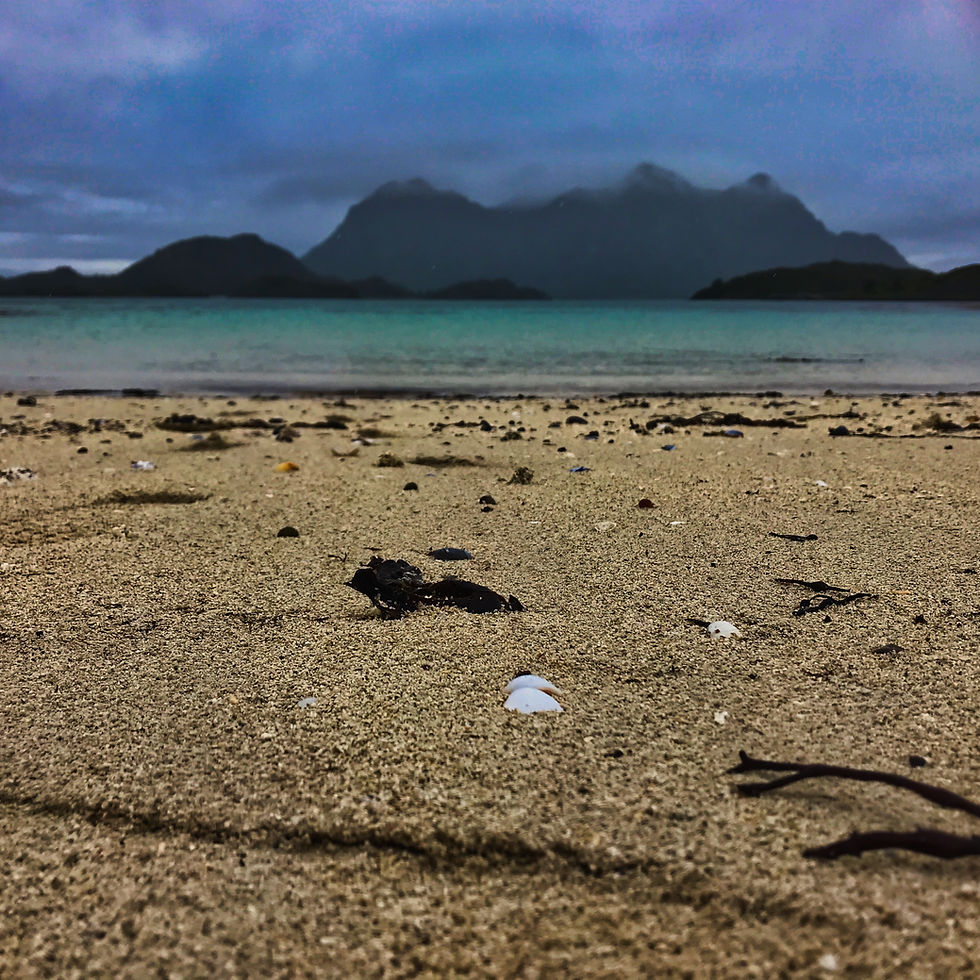
After a fairly wet and windy night, we set off the next day in a flat calm sea, heading for the Trollfjord - a 2km long fjord that narrows to just one hundred metres and surrounded by high mountain views. On route we stopped to watch two porpoises fishing in a bay, spotted huge brown crabs on the sea bed (too deep to fish sadly), and saw thousands of sea urchins and sea anemones in the artic water that is, without doubt the clearest sea water that I have ever seen, anywhere. Trollfjord did not disappoint, and we enjoyed a wonderful few hours at the head of the fjord in the sunshine, collecting some firewood, replenishing our water bags from a waterfall, collecting mussels, urchins and cockles and walking up to a viewpoint.

En route back to our campsite we stopped to fish in a small tidal narrows. Looking below the surface, the water was full of fish - from small herring through to five foot cod! We managed to catch a reasonable haul and set off back to the campsite for our seafood feast. Fresh sea urchin starter; whole fish baked in foil with lemon, butter and herbs; fresh grilled smokey fish fillets; with steamed mussels and cockles and finished with toasted marshmallows on an open fire.

After another wet and windy night, the skies cleared again for our trip back down the fjord towards the small settlement of Digermullen. A very welcome coffee and cake, quick top up of food and we headed off again, heading for a mountainous island called Stormolla. This proved to be a bit of a long slog in to a Force 4 headwind, but the open seas, huge mountains, glaciers and eighteen sightings of sea eagles helped keep the mind focussed.
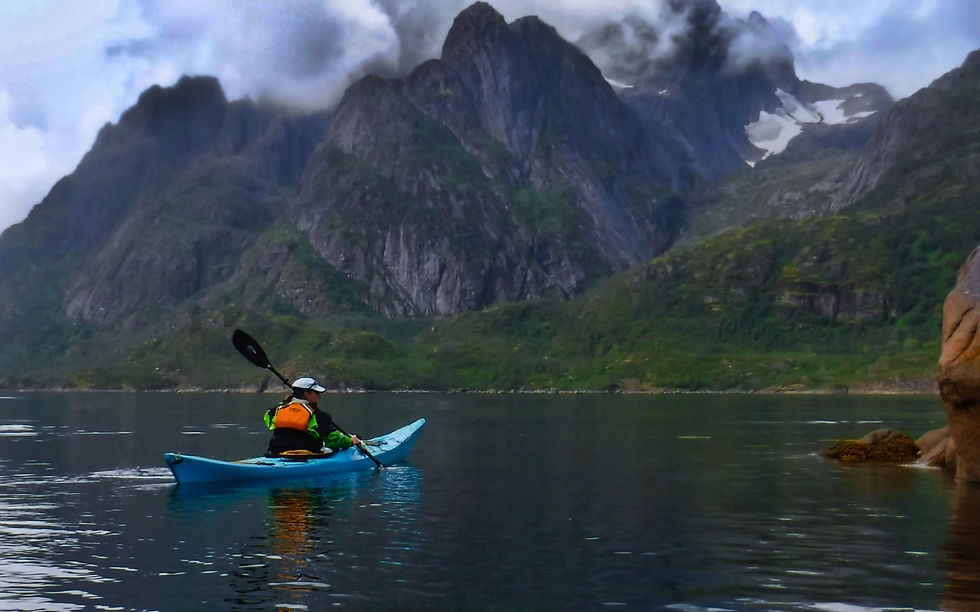
The sea eagles are huge, and often sit on a cliff watching us as we paddled through their domain. We saw one swoop low over us and hit the sea - but clearly missed its fishy target and rose up disappointed. An adult female has a wingspan of eight feet and these huge birds dominate this area.

We eventually made our campsite, a grassy field on a raised beach with stunning views. Just before the rains came again, some of us collecting wild blueberries for our porridge the next morning. The cloudy skies, mountain views and aquamarine seas make Lofoten a photographers paradise.
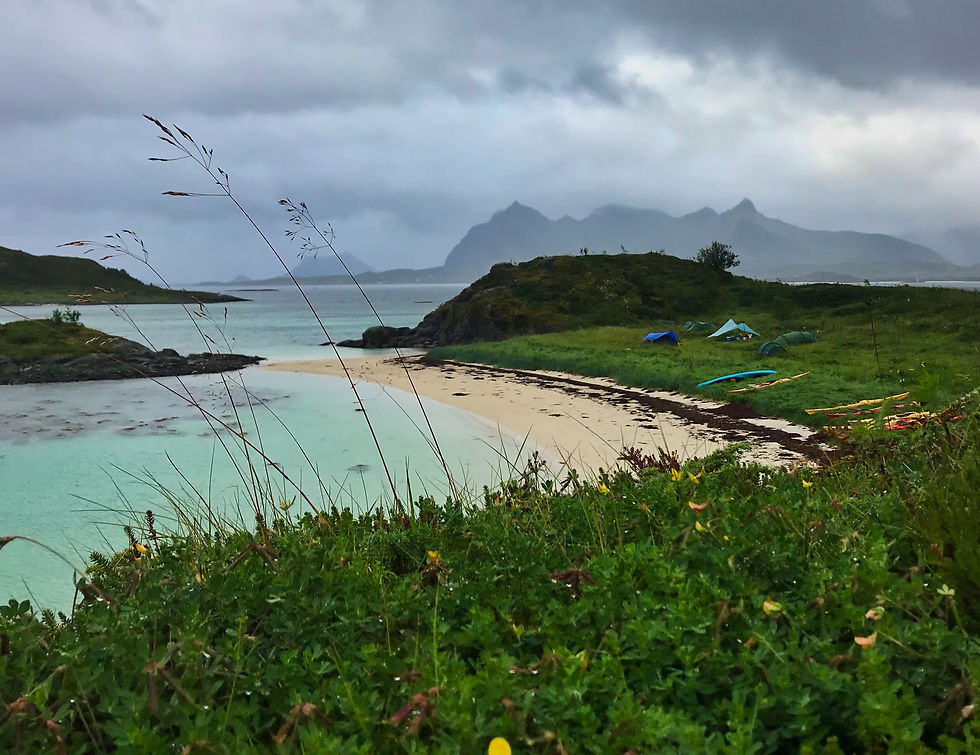
We had hoped to make it around Litmolla the next day, but with more high winds expected, we made a short skerry hoping 5km paddle to a tiny little island with white coral beaches, surrounded by aquamarine seas and huge mountains. The rest of the day was spent collecting wild berries, taking photographs and exploring our tiny little island; watching the Artic Terns fishing, plus some tent yoga and relaxing under the big group tarp. It was a very fine place to spend the day, nicely sheltered from the strong winds but with spectacular views. I actually adore these storm bound days, with time to read, to reflect, do some tent yoga and relax; properly relax in a way that one only can when in the simplicity of life in the wilderness.

Our final day we paddled though lots of small skerries under moody clouds, taking in the views and fresh artic air for the last day.

Lofoten offers endless paddling opportunities and I feel like we only really touched a tiny part of this island chain. We will certainly be leading more trips there next year, perhaps one later in the year when the northern lights make an appearance. If you can paddle 15 - 20 km per day and area happy in sea state 3 (approximately a British Canoeing 3 star standard) and would like an artic adventure - do get in touch!
This trip was run with Lisa Greene of Greene Adventures, another top guiding outfit with lots of local knowledge and experience.
You can watch a three minute video of our adventure below: